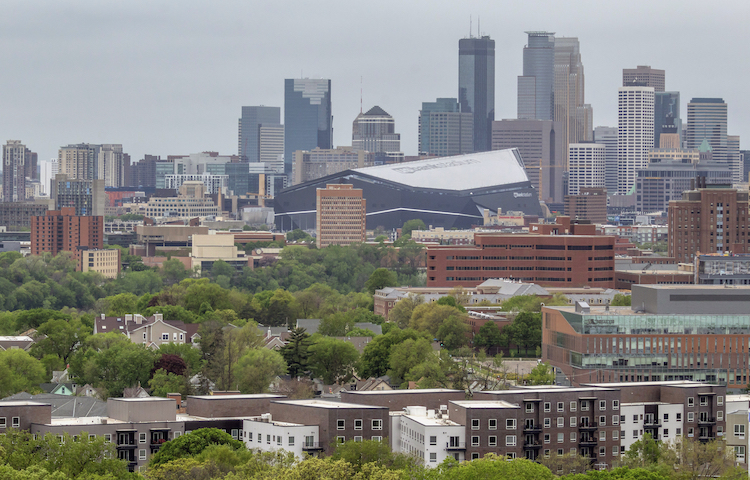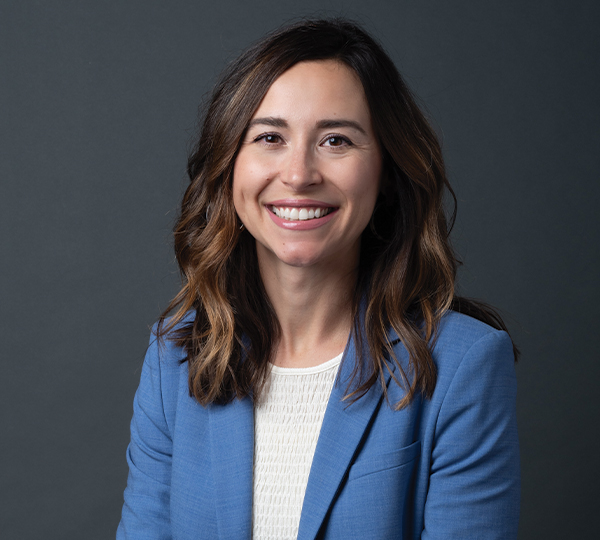Presented By: Future of Series presented by JPMorgan Chase
JPMorgan Chase’s Diana Dyste to Supercharge Affordable Housing in the Central Region
By Future of Series presented by JPMorgan Chase October 16, 2023 8:00 am
reprints
Diana Dyste, vice president of Community Development Real Estate, Commercial Banking at JPMorgan Chase, is focused on affordable housing development in the central region. Partner Insights spoke with Dyste about how she and her team are growing the stock of affordable housing in the region with a focus on equity.
Commercial Observer: You’ve worked in affordable housing for over a decade. How did you get into the space?
Diana Dyste: While at the University of Michigan, I studied cultural anthropology and women’s studies, gravitating toward coursework focused on social justice. This led me to a semester abroad in Ecuador, where I focused on international development, and was fascinated by the impact of culture on politics, economics and the built environment. I entered a graduate program in heritage conservation and preservation and shifted my focus to the physical makeup of our communities. Through my coursework in architecture, urban planning and public policy, I fell in love with real estate development.
After graduating, I spent 10 years working as a project manager, developing and preserving affordable housing throughout the Midwest. I then shifted to a consulting role in affordable housing, leaning into my passion for supporting emerging and underrepresented developers in this space. This leads to me today, where my career has come full circle on the JPMorgan Chase Community Development Banking team.

Which states in the central region do you cover?
The central region covers 26 states from Minnesota down to Texas and the mountain ranges east and west — so Montana south, and then Ohio south on the eastern side. I focus on Minnesota —my home base — as well as Wisconsin, Iowa, Colorado, Michigan and New Mexico. It’s exciting and a great challenge to cover such a wide remit. Each state is nuanced, so it’s critically important to know the submarket for our clients.
Can you describe the nuances to affordable housing development based on geographic location?
Affordable housing can’t be built fast enough — in the central region and across the United States — but I know from my limited time at JPMorgan Chase that the firm is committed to building and preserving clean, safe and affordable housing, and I look forward to this work.
In terms of financing projects, the primary tool to develop and preserve affordable housing is the Low-Income Housing Tax Credit (LIHTC) program. While it’s a federal program, the federal government allocates the tax credit to the states to administer the program. Specifically, in Minnesota, we have what are called sub-allocated jurisdictions, where select counties and cities administer the LIHTC program, providing more local control over the use of competitive resources.
How does your work at JPMorgan Chase help in the development and preservation of affordable housing?
In my role, I work directly with real estate developers who are pursuing the development and preservation of LIHTC and workforce housing transactions at all stages of the development process. JPMorgan Chase Community Development Banking also supports communities by providing Historic Tax Credit and New Markets Tax Credit equity and intermediary loans.
The success of our group doesn’t happen alone. We work in partnership with our tax-oriented investment LIHTC equity partners. Also, as we grow our Agency Lending business, Fannie Mae and Freddie Mac have been critical partners and allow us to offer our clients multiple financing options. We also offer Treasury services, acquisition financing and letters of credit, and provide small business consulting services for our emerging clients.
Walk us through an example of a major affordable housing project you helped get off the ground.
When I was at a nonprofit in suburban Twin Cities, we partnered with a for-profit developer who proposed a senior for-sale condo-structure housing development. We brought the affordable family component to that development and transaction. We worked closely with City Council members to gain support, and to ensure that the community supported the transaction and had input into the design and the services provided. We ultimately developed 54 units of family housing, inclusive of a handful of units reserved for people with disabilities and folks that had experienced homelessness. I also managed a request-for-proposal process with local artists to develop a featured art walk for seniors and families.
What are some of the greatest challenges to building and preserving affordable housing in the central region today?
During the pandemic, construction was impacted by labor and material shortages as well as material price hikes, and we are still feeling this impact. More recently, interest rate hikes have slowed production on both the affordable and market-rate sides. Insurance rates have skyrocketed as well.
All these factors, plus zoning issues and not in my back yard (NIMBY)ism, are really making development a challenge. It’s essential the federal government continues to invest in housing at all levels, including housing choice vouchers and other rental subsidies.
How does the central region’s work align with JPMorgan Chase’s efforts in affordable housing and racial equity nationwide?
In 2020, JPMorgan Chase announced a $30 billion racial equity commitment to help close the racial wealth gap among Black, Hispanic, Latino and underserved communities across the nation. A critical area of focus included in the commitment is tackling historic inequalities impacting homeownership, particularly in underserved communities. Any unit of housing we can build is a positive, and the more we can build that are affordable to the average worker, that to us is critical.
As a firm, we also focus on improving financial health, access to banking and investment in minority-owned and -led financial institutions, growing small businesses and spending more with diverse suppliers, and accelerating investment in employees while building a more diverse and inclusive workforce.
You’re on the board of the Minnesota chapter of the Women’s Affordable Housing Network (WAHN) and a co-chair of the Urban Land Institute (ULI), Minnesota’s housing committee. What work do you do with these organizations, and how does it impact housing production, preservation, and equitable outcomes in commercial real estate?
Earlier this year, I joined the Minnesota chapter of WAHN as a founding member to support and build a statewide organization that brings together women from all sectors of the affordable housing industry. We aim to transform the affordable housing landscape, ensuring equitable access to secure and sustainable housing. I’ve also been an active member of ULI Minnesota. I’m currently the co-chair of its housing council, a group of about 40 housing stakeholders who examine best practices that support a full range of housing choices in connected, livable places twice a year.



